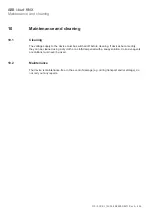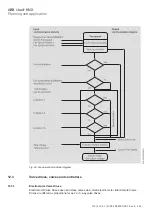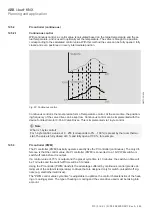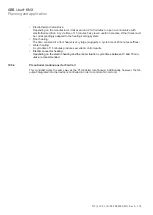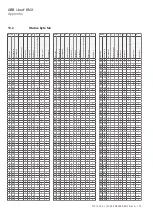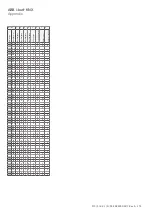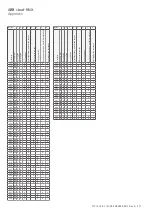
ABB i-bus
®
KNX
Planning and application
FCC/S 1.X.X.1 | 2CDC 508 200 D0211 Rev A 369
12.5.2
PI controller (continuous)
12.5.2.1
Continuous control
With continuous control, a control value is calculated based on the target temperature and the ac-
tual temperature, and is used to optimally set the temperature. The valve is brought to a position
corresponding to the calculated control value. With this method the valve can be fully opened, fully
closed and even positioned in every intermediate position.
Fig. 67: Continuous control
DESTO001804
Continuous control is the most precise form of temperature control. At the same time, the position-
ing frequency of the valve drive can be kept low. Continuous control can be implemented with the
device for Electromotor 3-Point Valve Drives. This is implemented via 1-byte control.
Note
What is 1-byte control?
For 1-byte control, a value of 0…255 (corresponds to 0%…100%) is preset by the room thermo-
stat. The valve is fully closed at 0 % and fully open at 100 %, for example.
12.5.3
PI controller (PWM)
The PI controller (PWM) basically operates exactly like the PI controller (continuous). The only dif-
ference is that the control value of a PI controller (PWM) is converted to a 1 bit PWM switch-on/
switch-off ratio before it is output.
If a control value of 70 % is output and the preset cycle time is 10 minutes, the switch-on time will
be 7 minutes and the switch-off time will be 3 minutes.
Using the PI controller (PWM) transfers the advantages offered by continuous control (precise at-
tainment of the setpoint temperature) to drives that are designed only for switch-on/switch-off sig-
nals (e.g. electrothermal drives).
The "PWM control value cycle time" is adjustable to optimize the control characteristics of the heat-
ing or cooling system. The type of heating or cooling and the valve drive used must be taking into
account.


